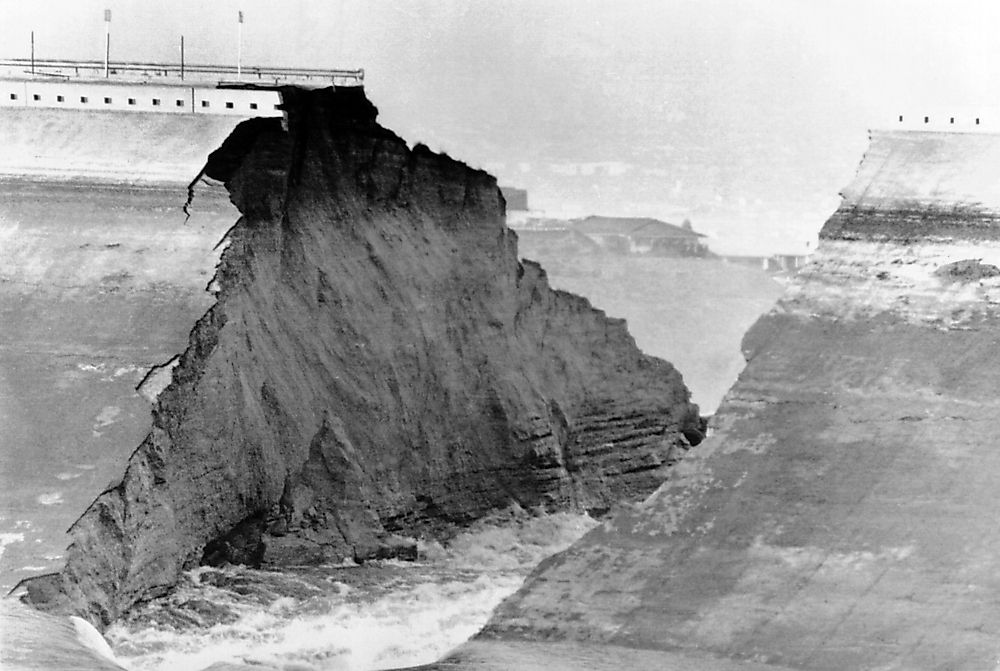What Are the Primary Causes of Dam Failure?

A dam is a structure built to store large volumes of water, control the flow of water, or divert water flowing from upstream. Under International Humanitarian Law, dams are classified as dangerous installations due to their potential to cause massive damage in the case of failure. Dam failures may lead to loss of lives, economic losses, and destruction of the environment. Although dam failures are caused by several factors, such as extreme inflow, use of sub-standard construction materials, poor maintenance, and design error, failures are relatively rare.
Major Causes of Dam Failure
Extreme Inflow
Extreme water inflow from prolonged rainfall and flooding is one of the leading causes of dam failures. Although most dams are designed to survive extreme weather conditions, prolonged seasons of rain and flooding often put pressure on the dam and may cause the structure to collapse. In 1975, China experienced abnormal flooding due to typhoon Nina, which led to the destruction of some of its dams before they overflowed. In 2005, Pakistan's Shadi Kaur Dam suffered excessive water inflow due to heavy flooding, and as a result, it burst its embankment leading to 70 deaths and more than 1,000 severe injuries.
Use of Sub-standard Construction Materials
The use of improper construction materials is another primary cause of dam failures. During the construction of a dam, it is critical to use the right construction materials and in approved quantities. Inability to use quality construction materials often causes the dam to collapse. Italy's Gleno Dam is one such example whereby substandard material was used in the dam’s construction. The dam’s construction began in 1916, and local authorities warned that the contractors were using the wrong cement mortar. The multiple-arch dam was completed in October 1923 and failed only two months later. Investigators attributed the dam’s failure to use of improper reinforcement material on the dam’s arches.
Poor Maintenance
Another major cause of dam failure is poor maintenance. Dams require regular and frequent maintenance to ensure they are safe for the civilians living in the area and the environment. International laws on dam safety demand that regular inspections and maintenance procedures are conducted by qualified professionals. The absence of such regular checks on dams may lead to weakening of the dams and therefore failure of the structure. The Val di Stava Dam in Italy collapsed in 1985 due to lack of proper maintenance. A drainage pipe in the dam failed to drain water due to massive sediment deposits. As a result, the dam failed due to inefficient drainage. The problem could have been identified earlier if regular maintenance of the dam was performed.
Design Error
Design error is another common cause of dam failures. Design errors occur when essential factors are not incorporated into the design and construction of a dam. The Taum Sauk Dam in the United States failed in 2005 primarily due to a design flaw. The dam lacked a proper system for gauging the water level in its reservoirs, which resulted in an overflow of water. The dam was reconstructed in 2007, and appropriate monitors were incorporated in the dam’s structure to prevent future failure.











